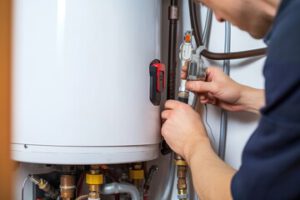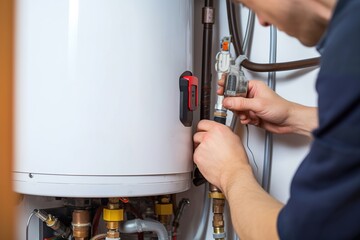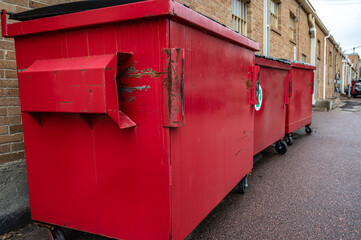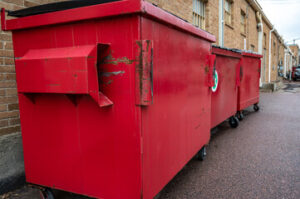Water heaters can develop problems that require repair. Some issues can be expensive, but others are fairly easy fixes.
If there’s no hot water, check to see if the circuit breaker is in the “On” position or if a fuse hasn’t blown. However, if you need professional help, contact Denver Water Heater Repair now!
Cloudy water signals mineral deposits, and rusty or smelly water can indicate a broken anode rod.
The thermostat regulates the temperature of your hot water. If it isn’t working, your water may be scalding when you turn on a faucet. Thermostat problems also lead to long wait times for water to heat or the heater to kick on and off repeatedly. You’ll need to troubleshoot and replace the thermostat or heating element. Before starting this water heater repair, shut off the power to your electric storage tank. Make sure you close all the water valves inside the house so no one can open a faucet and flood the place. Also, make sure to shut the gas supply. You’ll need a Phillips and flatbed screwdriver, a multimeter, and a new thermostat (remember to check the dimensions of your new thermostat so it fits).
Start by turning the breaker inside the electrical panel off and taping or locking it in the off position. This will prevent you from accidentally working on the electric wiring and killing yourself. Then, remove the screws that hold the access panel on your tank to expose the insulation. Place a piece of painter’s tape next to each wire and assign a number to each thermostat screw where there is a wire attached. This will help you reconnect the right wires to the correct terminals when you replace the thermostat.
Next, touch one probe of your multimeter to grounded metal like the unpainted steel on the tank housing and the other to each thermostat and heating element terminal. The multimeter should read no voltage (Zero) at all times if these parts are working properly.
If the reset button is still tripping, however, you will need to check each thermostat and heating element for continuity – a continuous electrical path present in the part. You can use your multimeter to do this by touching the left side terminal on the reset button with one lead and the other multimeter lead to the bottom terminal of the heating element with the other lead. If the multimeter reads no continuity, then the heating element or thermostat is faulty and needs to be replaced.
Dip Tubes
The dip tube is an unsung hero of water heaters that transfers cold water from the top of your tank back down to the bottom so it can be reheated by the lower element. This is vital to a properly heated hot water system and signs that it’s wearing out are not to be ignored.
If you find small pieces of plastic clogging appliance filters, faucet aerators and showerheads it’s a good indicator that your water heater’s dip tube is degraded and needs replacement. Also watch out for a sudden decrease in your water heater’s water temperature, as a faulty dip tube may dump cool water at the top of the tank, reducing the overall hot water temperature.
For safety reasons, before doing any work on your water heater shut off the power at its circuit breaker (for electric) or gas control dial (for gas). Next drain the tank by connecting a garden hose to the drain valve at the bottom of the heater and running it outside or somewhere else where the water can escape.
Now that the tank is empty you should be able to access the dip tube’s inlet. The top of the dip tube sticks up from the tank and has a pipe nipple and connector on it, removing these should be enough to reveal the dip tube underneath. Once the dip tube is removed, you should be able to see the cracked or corroded surface of the metal inside that will need to be replaced.
Obtain a new replacement dip tube and make sure it’s the correct size for your model of water heater. It should also be made from a durable material that will resist corrosion and the effects of hard water on it. The replacement should have a flared upper end that fits over the dip tube inlet and a fastener or nipple on the bottom to secure it. To install it, first wrap plumber’s tape around the end of the replacement to seal off any possible leaks or messes at the interface of the two parts that screw together. Then simply drop the replacement in and tighten or screw it down on the nipple or connector.
Pressure Relief Valve
The temperature and pressure relief valve is an important part of the safety features of a hot water heater. The valve allows the excess water pressure inside a hot water tank to safely discharge, keeping the water heater from blowing up and causing a dangerous situation for your family. The valve is usually located on the top of the water heater tank or next to it, with a discharge tube that extends to a bucket or other container for the excess water to discharge into. The drain line connecting the valve to the discharge tube should be installed correctly and insulated to prevent freezing in cold weather.
Often, a water heater with a bad pressure relief valve will start to leak. A leaking valve does not mean that the valve is broken, however. The valve is actually doing its job when it leaks, releasing the excess water that builds up in the water heater.
If a water heater’s pressure relief valve is not functioning properly, it may be causing a flood in the garage or closet underneath the hot water heater. It’s essential to have this valve properly installed, and regularly tested for proper operation.
A faulty water heater pressure relief valve can become so stick that it fails to open when triggered, or it may not close after the excess water is released. In either case, it is not something to be ignored and must be repaired as soon as possible to prevent a more serious situation.
If the relief valve is stuck open, a plumber will likely need to remove and replace it. In the meantime, a homeowner can try to determine why the valve is opening. This will help them decide if it is due to the temperature or the pressure, and which one can be remedied to make the valve functional again.
If the valve is not stuck, but it continues to leak, this may indicate that it has been set too high. This can be easily solved by adjusting the setting. The TPRV is typically set to release at 150 PSI or 210 deg F, which can be found printed right on the valve, or on a label on the outside of the water heater tank.
Heater Element
A water heater’s heating elements are what make the water hot. When they start to go bad, the water temperature goes down and you don’t have as much hot water as before. If you have a multimeter, you can test each element to determine which one needs replacement. Changing the element isn’t as difficult as it might seem at first glance, and you can usually do it yourself.
Before you start working on your water heater, turn off electric power to it by turning off the circuit breaker that powers the water heater. This breaker is typically located in your home’s central breaker box, which is often in the garage, basement or under a stairway. It might be a separate switch for your water heater or it may be the same as the one that controls your entire house.
Shut off the cold water supply to your water heater, open a hot water faucet, and attach a hose to the drain valve on the water heater. Open the drain valve and drain the water from the tank. This is a good time to clean the inside of your water heater tank as well.
With the water heater still drained, you can now remove the element and replace it with the new one. Before you do, however, ensure that the new element matches the voltage and wattage rating of your old one (you can find this information on the flange or terminal block of the heating element or on the data plate on your water heater). Also, replace the rubber gasket, or “O” ring, on the end of the element.
Once you’ve replaced the element, make sure that the electrical wires are connected correctly to the new thermostat bracket and the terminals on the element. If the wiring is corroded or damaged, you’ll need to replace it before connecting the element to the circuit breaker.
Before restoring electric power to your water heater, check the condition of the element and the thermostat with a multimeter. The multimeter should read between 10 and 30 ohms, which means the element and thermostat are functioning properly.





